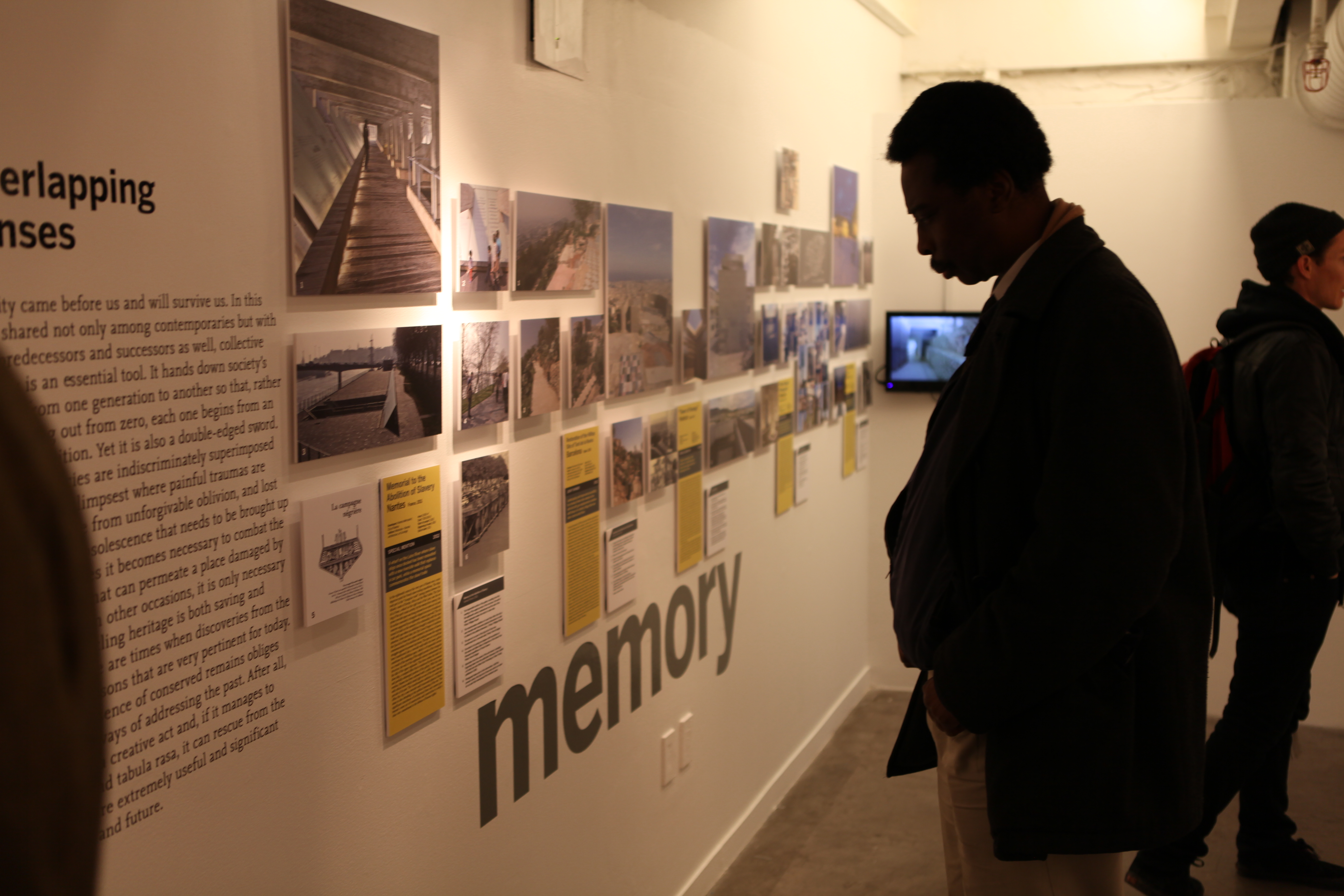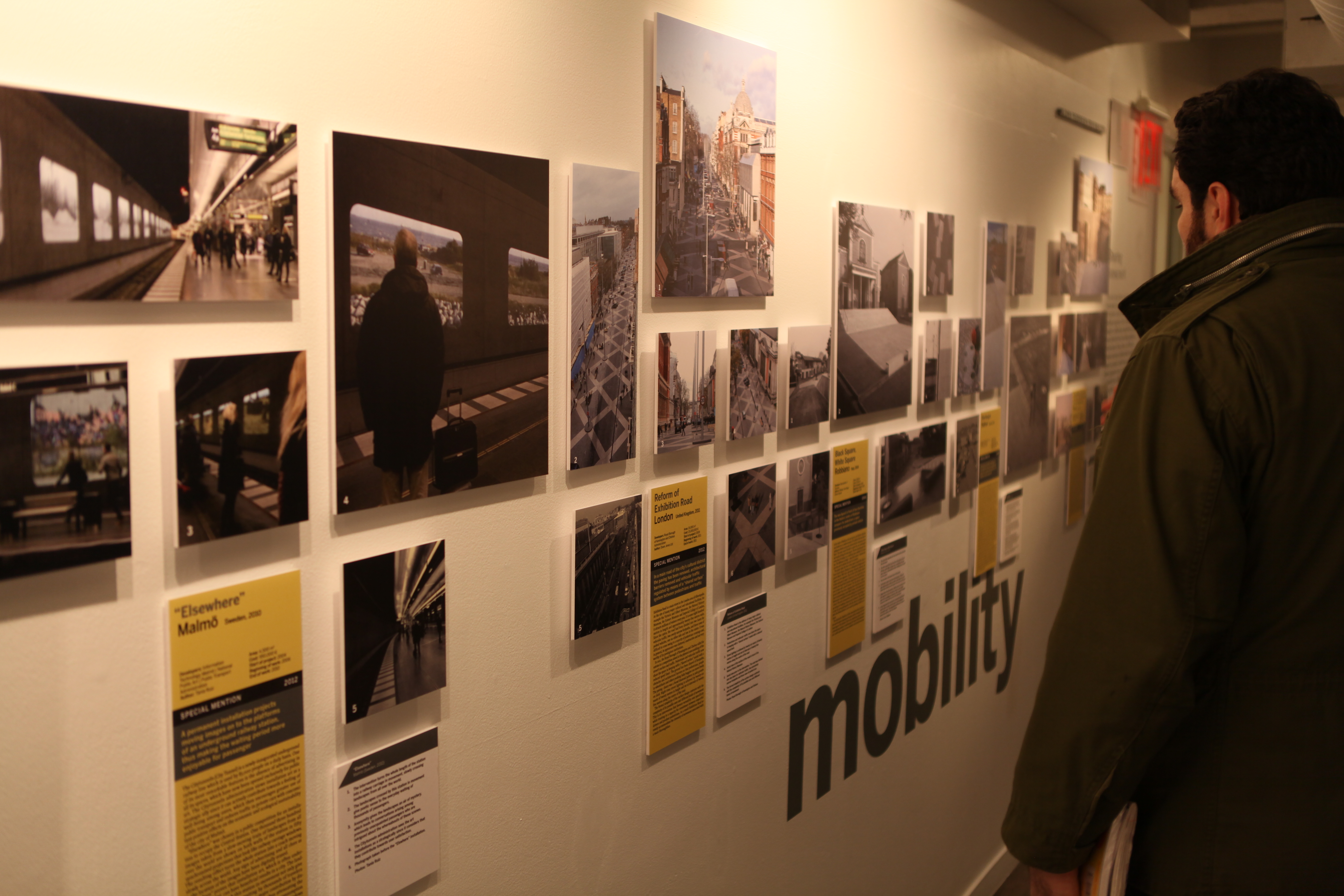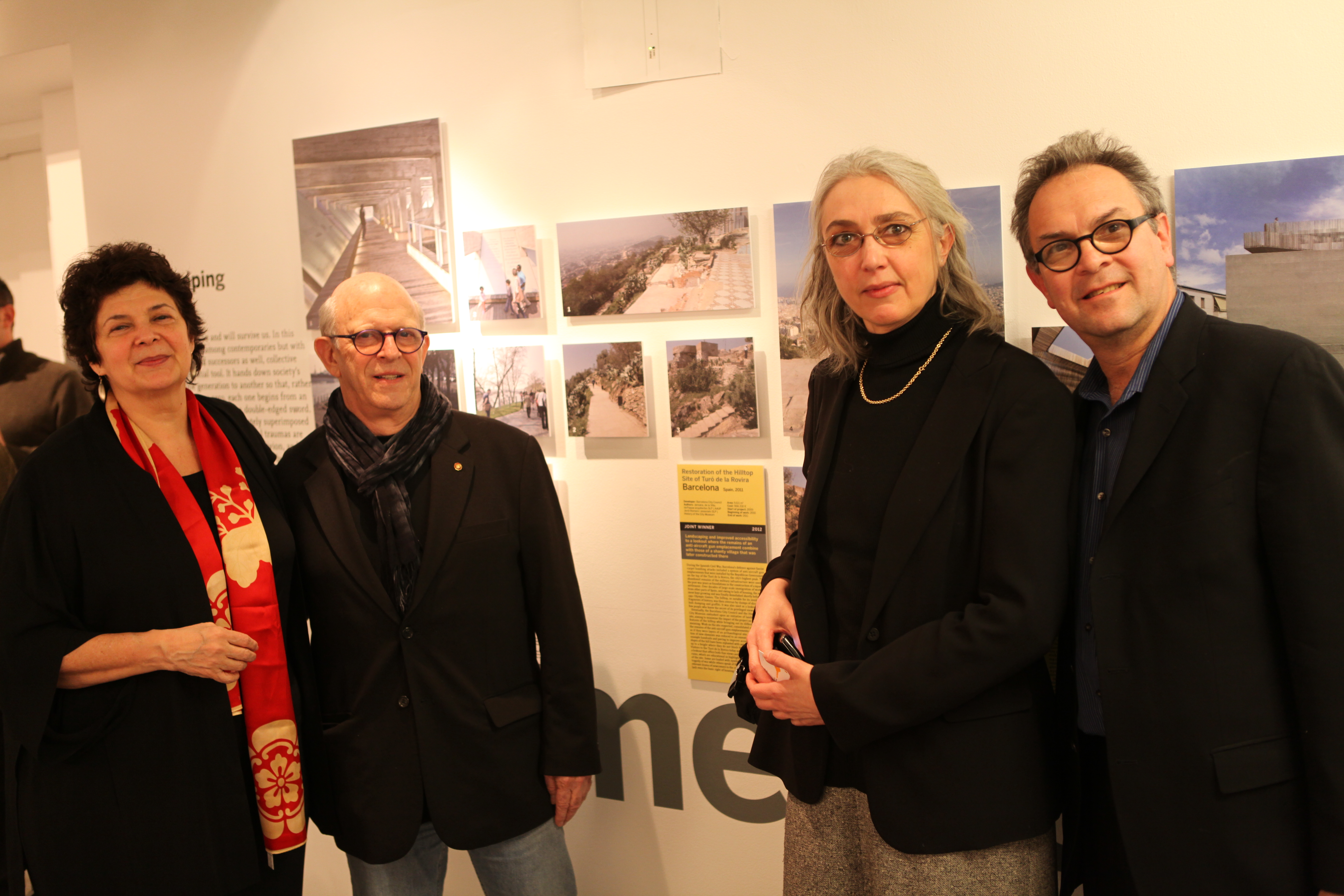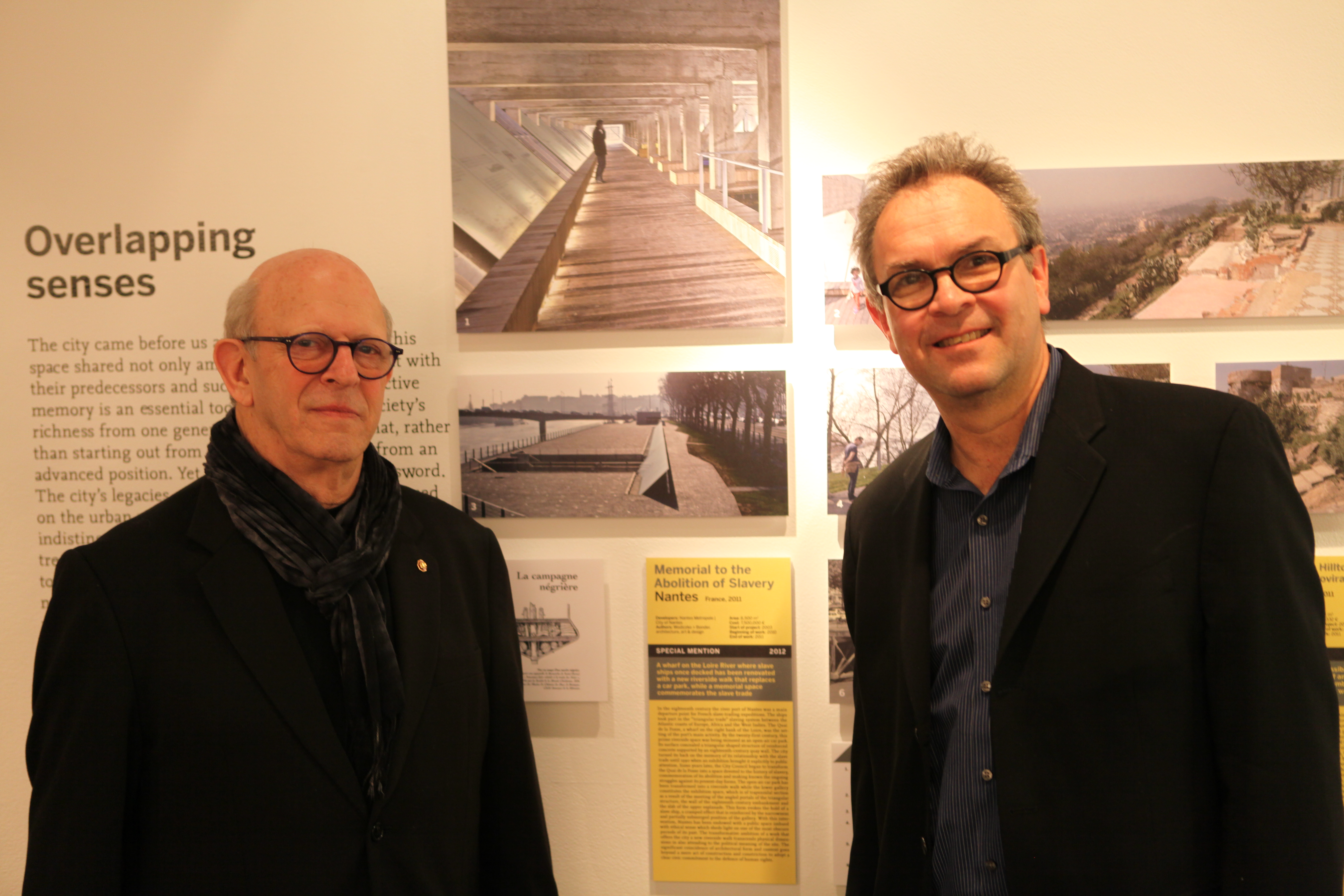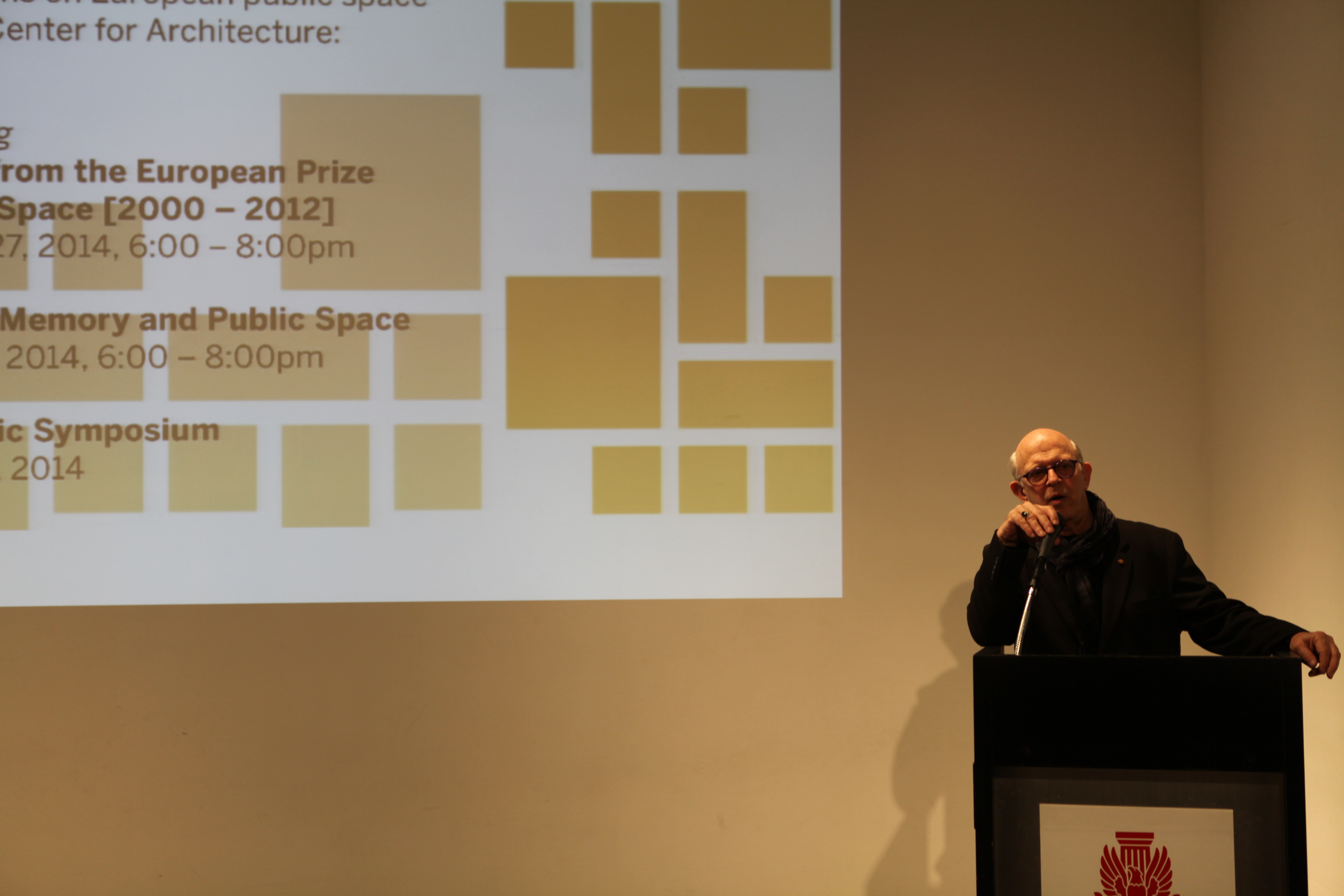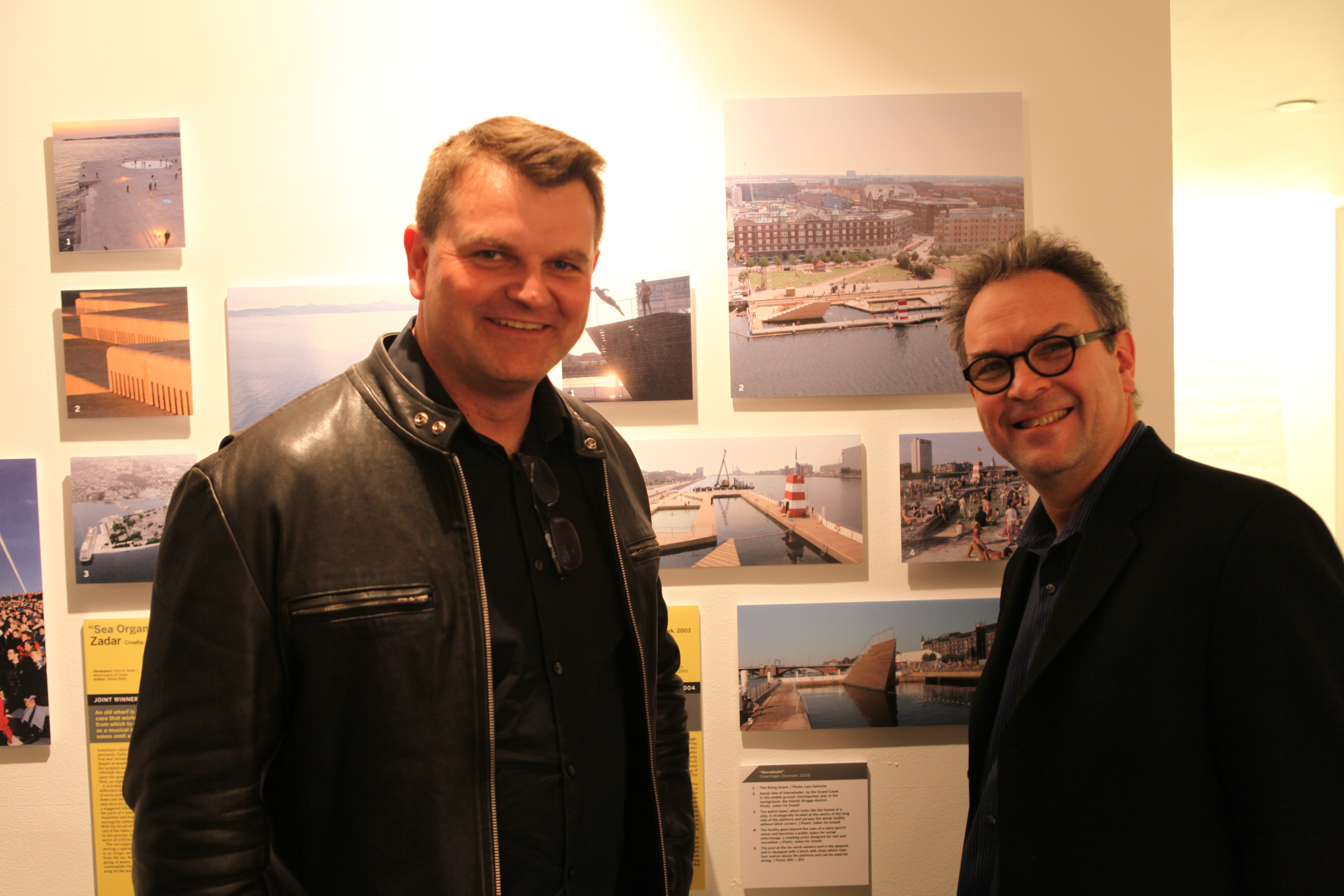by Claire Webb
The Google map of Aix-en-Provence shows curving lines merging in concentric circles that look not all that different from regular streets. On the ground, however, the medieval streets are almost impassable: traffic moves very slowly through a tangle of pedestrians and cyclists. This brings to light the issue of how old European cities remake themselves to suit the current demands of their denizens to be greener and more habitable. Sometimes, as they move from ancient to updated, they also have to revise modern botches that have left voids, areas that divide the city, or spaces that ignore diversity or natural resources.
The Center for Architecture’s opening of “Polis: 7 Lessons from the European Prize for Public Urban Space [2000-2012]” celebrates these transformations, these applications of the democratic conception of the city. The prize has gathered 1,300 projects from cities across Europe, and the Center’s exhibition highlights 35 works from the first seven editions of the prize. The exhibition, of course, derives its name, polis, from the idealized Greek city-state, reminding us that the city is ours to take ownership over and shape to our will. As grandiose and bold as this goal is, “Polis” shows how the remaking of public space occurs in nested moments as easily as through large-scale moves. The show is organized around seven precepts that dynamically embody the AIANY President Lance Jay Brown’s, FAIA, theme for this year, “Civic Spirit: Civic Vision.”
Periphery – Areas on the fringes of European cities can grow desolate, forgotten, or even toxic as the demands of that city grow and modernize. The landscape restoration of a landfill near Begues, Spain, transformed a near-toxic site for 30 years into sloping terraces that now grow vegetables. On the banks of the River Besos in Barcelona, inflatable weirs, new ramps, and a commitment to biodiversity have also enlivened a formerly derelict site.
Complexity – Cities in Europe must honor a cultural legacy that has endured eons, but that sometimes makes cities homogenous, and they must sensitively combat this stagnation. Diversity should be celebrated. The Green Tenerife in Buenavista Norte, Spain, cultivates new public spaces and walkways that mingle with the ruins of the nearby San Francisco convent.
Voids – Barren patches, or “involuntary exceptions, bereft of uses and sense,” necessarily exist in cities that have been digested by war, careless renovations, or just the passing of time. The Tilla-Derieux Park in Berlin, fills such a void: green dunes undulate, traversing a formerly empty space, now linking two “platzes.”
Water – Cities must carefully balance their waterfronts: building economic enticements, such as luxury housing, should not obliterate crafting communal spaces for the public. Fishermen’s huts in Cangas do Morrazo, Spain, link housing with boat moorings and passageways, creating a little village. The Norwegian National Opera in Oslo, holds open-air public events and imitates a beach.
Mobility – The situation in Aix-en-Provence highlights how some cities succeed in divvying up space while others do not. Another example of spatial transformation on view is the Exhibition Road in London. The dark, cramped road that had been dominated by speeding traffic is now light and airy, and pedestrians are given equal priority and mobility.
Memory – Our cities, which “came before us and will survive us,” have been built and recorded by human hands. Therefore, making memory is a shared, amorphous endeavor that lives physically and collectively. The Memorial to the Abolition of Slavery in Nantes, France, is a meditative space: trapezoidal, sculptural sections of the gallery are reminiscent of a slave ship, and the personal nature of slavery is punctuated by the listed names and departures of the slaving ships.
Democracy – The exhibition presents the idea that democracy must be fought for, that it must be “conquered and defended in a permanent struggle.” This proposition may seem counterintuitive, but becomes more true and resonant as one walks through “Polis.” Democracy does not exist in a vacuum. It is a lived and worn idea – an unalienable tenet of Western thought that we must vigilantly protect. A structure built for the Occupation of Puerta del Sol in Madrid, was built of every-day materials by protestors seeking to expand their democratic systems. The open-air Library in Magdeburg, Germany, is resident-run, and the community can borrow books freely.
Rick Bell, FAIA, AIANY executive director, remarked that, strikingly, 11 of the 35 examples in the exhibit exist in Spain; runner-ups for frequency were Slovenia, The Netherlands, and Germany. He also mentioned that while parks are obvious symbols of public space being used well (most of the time), urban spaces should not be “second citizens” to them. Looking for moments to remake dense spaces, especially, can offer relief in dense, crowded cities whose use has changed dramatically over millennia.
Claire Webb studied astronomy and philosophy at Vassar College, but an interest in art history and architecture led her to the position of Marketing Director at Edelman Sultan Knox Wood / Architects.
Event: Exhibition Opening | Polis: 7 Lessons from the European Prize for Urban Public Space [2000-2012]
Location: Center for Architecture, 03.27.14
Speakers: Rick Bell, FAIA, Executive Director, AIANY; and Lance Jay Brown, FAIA, 2014 President, AIANY
Organizers: Centre of Contemporary Culture of Barcelona (CCCB) and the Center for Architecture
Partners: The Architecture Foundation, Architekturzentrum, Cité de l’architecture & du patrimoine, Deutsches Architekturmuseum, Muzej Za Architekturo in Oblikovanje, and the Museum of Finnish Architecture
Sponsors: FXFOWLE, Pei Cobb Freed & Partners Architects, Sciame (patrons), CetraRuddy, Ennead Architects, Pelli Clarke Pelli Architects, Peter Gisolfi Associates, Robert A.M. Stern Architects, Skidmore, Owings and Merrill, Studio Daniel Libeskind, Thomas Phifer and Partners (sponsors), Capalino + Company, Desai Chia Architecture, Handel Architects, Ibex Construction, Kohn Pedersen Fox Associates, New York Building Congress, Stephen B. Jacobs Group, Syska Hennessy Group, TEN Arquitectos, Thornton Tomasetti, and Zetlin & De Chiara (supporters)
